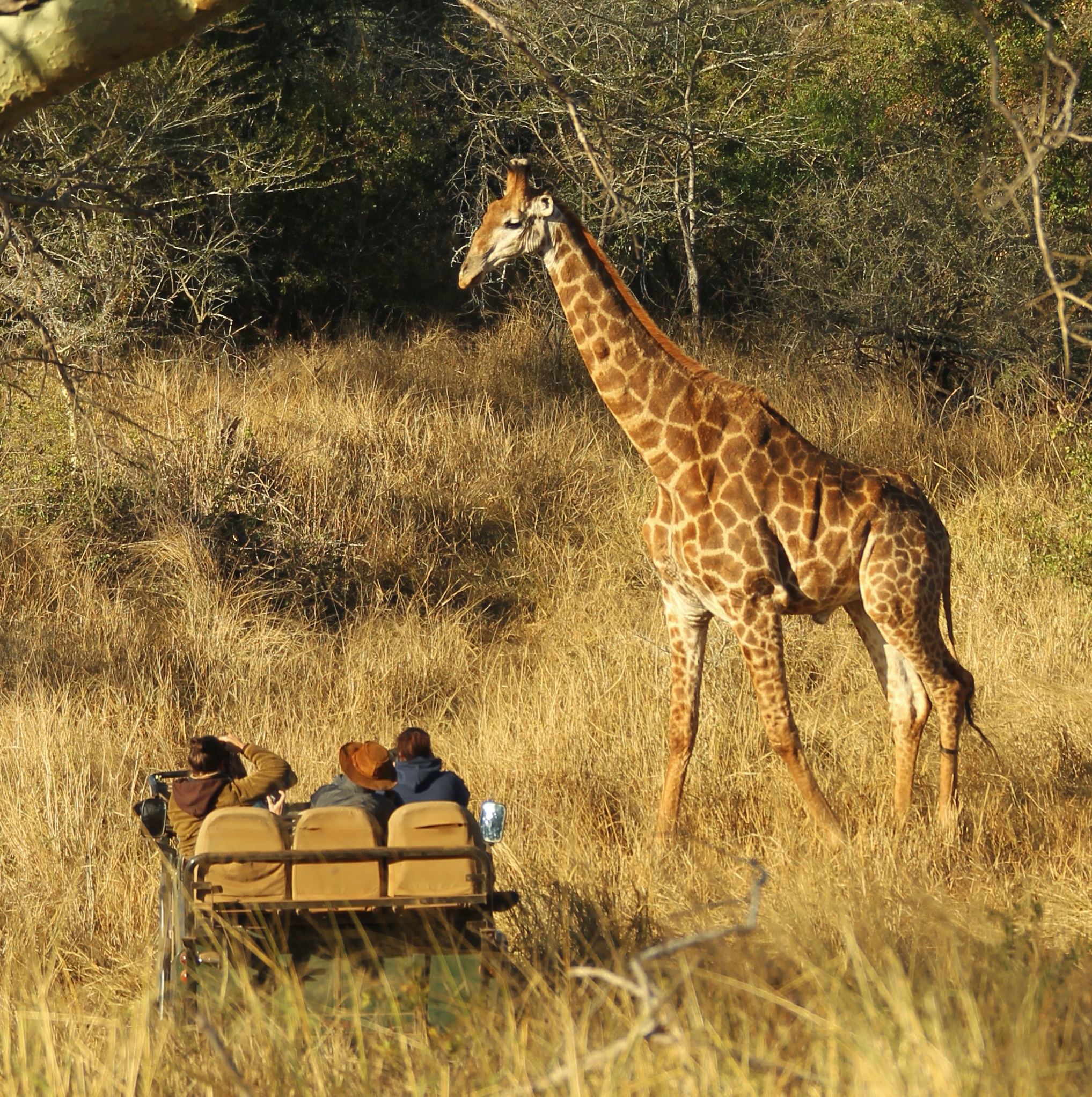Lorraine Doyle, Wildlife Manager and Resident Ecologist of Thanda Safari in KwaZulu Natal, South Africa, shares some surprising facts ahead of National Giraffe Day on 21st June
It is well known that the giraffe is the tallest mammal on earth and has to comically splay its legs to drink. Some also know that no two giraffes have the same coat pattern and their tongue is famously long to navigate around the thorns of the Acacia tree. For those brushing up on their facts in time for National Giraffe Day on 21st June might not however know that these herbivores eat bones, are essential pollinators, and have also helped NASA scientists develop astronaut’s anti-gravity suits.
Lorraine Doyle, Wildlife Manager, and Resident Ecologist at Thanda Safari, whose meaningful safari experiences and close-up encounters with Africa’s magnificent Big Five are combined with a strong community and conservation commitment, knows this and more:
“At the end of the dry winter season food is often in short supply,” says Doyle. “Giraffe require some 30kg of food per day, a tall order when many trees do not yet have their summer foliage. One tree, the Knob thorn (Senegalia [Acacia] nigrescens), has evolved a strategy that meets both its needs and those of the giraffe – early flowering. Creamy-white flowers appear in abundance during late August at Thanda Safari when most other trees are still bare. Whilst feeding on these protein-rich flowers, the giraffe becomes dusted with pollen on its head and neck depositing its pollen load when it moves onto the next tree”.

It is in no doubt that giraffes eat a ‘vegetarian’ diet and so it is something of a surprise to come across one with a bone in its mouth. Giraffes require large amounts of phosphorous and calcium to sustain the growth and maintenance of their skeletons. Unlike calcium, phosphorous levels in leaf matter are thought to be insufficient, and chewing on bones is common and suggests that some benefit is derived by the giraffe.
A rare female presence on the safari scene in Africa, Doyle ensures that the award-winning game reserve follows the best conservation practices and procedures to preserve not just wild animals, but also indigenous plant life across nearly 35,000 acres of stunning wilderness.
“The fact that herbivores will feed on the bones of other animals demonstrates the extraordinary complexity of the interrelationships between organisms. So when you next have the chance to get into the bush, spare a moment to think that what you are witnessing could have at its endpoint the provision of much-needed minerals for giraffes and the ongoing pollination of Knob thorn trees,” proffers Doyle.
These uniquely beautiful creatures with their long necks and legs consequently have a complex blood pressure-regulation system. A series of specialized vein and artery structures regulate rapid blood flows as they bend down to drink, and rise back up again, preventing blood pooling in the lower extremities – properties which were studied extensively by NASA scientists whilst they were developing astronaut’s anti-gravity suits.
Whilst the giraffe’s circulatory adaptations may have also helped provide insights for the treatment of high blood pressure (hypertension), a disease currently thought to affect 1 billion people worldwide, this remarkable animal now too needs assistance to survive.
Giraffe numbers have declined by almost 30% in just over three decades across Africa. In 2016, as a result of these findings, the status of giraffes was uplisted on the IUCN Red List of Threatened Species from Least Concern to Vulnerable to extinction. The Giraffe Conservation Foundation is currently the only NGO in the world that concentrates solely of the conservation and management of wild giraffe throughout Africa.
Giraffe sightings are plentiful at Thanda Safari although their exact numbers are unknown – whilst they are successful breeders, their young are regularly preyed on by predators. Translated as ‘as tall as trees’ in Zulu, they have always been a particular favorite of children.
While conservation and wildlife management keep Doyle busy at Thanda Safari, she is always happy to take guests interested in learning more about conservation out tracking as opportunities allow. “When I can, I do like to get involved. Education is the foundation of conservation.”
For more information on travel in Africa with Thanda Safari, please contact
T: +27 (0) 27 32 586 0149; E: [email protected]; or visit www.thandasafari.co.za

About Thanda Safari
Thanda Safari is a Big Five game reserve situated on 35,000 acres in the heart of Zululand, KwaZulu Natal, owned by Swedish philanthropists Christin and Dan Olofsson. It offers an authentic South African wildlife experience with excellent game viewing all year round, and has a sincere commitment to the Zulu culture and conservation of the environment. Actively involved in conservation and wildlife research, it works to uplift the local communities through ‘Star for Life’ and other projects.
Lorraine Doyle is also Co-Director of Ulwazi Research & Volunteer Programme and Africa Nature Training, Thanda Safari’s internship programme offering professional guiding courses and educational experiences for nature enthusiasts. She is the highest qualified Safari Guide at Thanda Safari, having achieved Level 3 Lead Trails Guide and Assessor in terms of the Field Guides Association of Southern Africa and the Department of Tourism. Doyle is studying for her second honors degree in environmental science at the Open University in England, with financial support from Thanda Safari. A career from the outset, Doyle started her professional life as an Intensive Care sister in Bristol, England, having earnt an honors degree in nursing before moving back to Africa.
Images by Christian Sperka, Resident Wildlife Photographer at Thanda Safari.